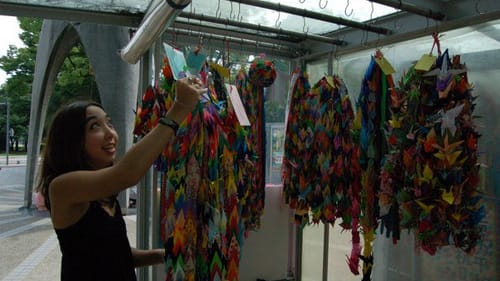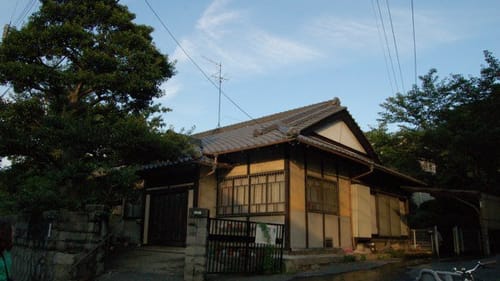Stay in the Loop
BSR publishes on a weekly schedule, with an email newsletter every Wednesday and Thursday morning. There’s no paywall, and subscribing is always free.
Who should tell this story?
Does a new ‘One Thousand Paper Cranes’ film eclipse people of Japanese heritage?

I don’t remember the first time my mother told me about the relatives we lost in the atomic bombing of Hiroshima. It was such an important part of our family’s history that I feel like I always knew about it.
When I was seven years old, my mother chaperoned a group of American high-school students visiting Hiroshima on the 50th anniversary of the bombing. My sister April (just five at the time) and I helped fold some of the 1,000 origami cranes the students delivered to the Peace Park in Hiroshima. I later visited the park when I lived in Japan, to deliver another 1,000 cranes with my mother and sister to a monument located just in front of the Atomic Bomb Dome, which is dedicated to the thousands of children who lost their lives in the bombing and its radiation-related cancers. The most well-known of these child victims was Sadako Sasaki, spotlighted in the upcoming film One Thousand Paper Cranes.
Sadako’s only wish
Sadako Sasaki was just two when the atomic bomb was dropped on Hiroshima, and 12 years old when she succumbed to leukemia—a direct result of the radiation exposure she received on August 6, 1945. As Sadako lay dying in her hospital bed, she desperately attempted to fold 1,000 origami cranes, which, according to Japanese legend, would grant the folder any wish she desired. Her only wish was to survive the cancer and live a normal life.

The coming film is adapted in part from Canadian American author Eleanor Coerr’s 1977 children’s novel Sadako and the Thousand Paper Cranes, with additional inspiration from a novel by Takayuki Ishii, One Thousand Paper Cranes: The Story of Sadako and the Children’s Peace Statue. Shooting is slated to begin later this year.
Coerr erroneously stated that Sadako fell short of her goal before passing away. Sadako actually exceeded her goal and likely realized that she was not going to survive, but continued to fold the cranes anyway. This sad story has been the basis for origami cranes becoming a renewed symbol of hope, resilience, and peace—one that continues to have deep meaning to Japanese and Japanese American communities alike.
The white gaze
While I am encouraged to see Sadako’s story and the symbolic meaning of the origami crane gaining a wider American audience, I am deeply disappointed that it happens from the viewpoint of white characters reacting to the lived trauma of my community. Although details about the plot are sparse, according to Variety, the two top-billed cast members are Evan Rachel Wood (playing the role of Coerr) and Jim Sturgess, led by British director Richard Raymond. Japanese actor Shinobu Terajima will also star. It seems the plot will follow Coerr during a trip to Hiroshima, where she learns Sadako’s story and decides to write her novel. The film’s tagline on IMDB reads, “In the 1950s, a journalist in search of an answer to the escalating fears of the nuclear war travels to Hiroshima and discovers a story that will forever change her life and give birth to a universal symbol of hope and peace.”

It is frustrating even to have to say this, but the writer of this screenplay (Ben Bolea, with Coerr and Ishii credited for the source material) somehow appears to have missed it, so here it is. By framing the story from Coerr’s perspective, the white author’s “discovery” of Sadako’s story seems more significant than the actual life and death of the girl herself. I find it difficult to read this as anything but a tired rehashing of the classic white-savior trope, which prioritizes the viewpoints of the white characters and validates the experiences of POC communities only when they are made relevant by white audiences reacting to them.
Despite the proliferation of more diverse stories and increasingly inclusive casting practices in Hollywood over the past couple years, we still seem stuck in the same conversation about who gets to tell whose stories. And this brings an even more important question to light: whether representation and inclusion within mainstream media can truly have the impact so many of us have been hoping for—achieving equity in a society that does not currently value our stories, or lives, equally. It also obscures the nuanced perspectives that only atomic-bomb survivors or their relatives are able to convey.
Hibaachan’s story
I had the incredible good fortune of having my Japanese great-grandmother in my life until I was 18. Hibaachan, as I called her, was born in the US territory of Hawaii and sent to live with her grandparents in the city of Hiroshima from ages five to 19, so she could experience a traditional Japanese education. In 1929 she married my great-grandfather and emigrated to California.

As a teenager, Hibaachan helped to raise her younger cousins and cared for the family home in Higashi Hiroshima, where many generations of our ancestors had lived. Because of where our house was situated, behind a small hill that separated their neighborhood from the rest of Hiroshima, the family home was spared from the initial blast radius of the atomic bomb, although the force of the nuclear wind was strong enough to blow the roof clear off.
The family members who were home that day were among the lucky few who survived relatively unscathed. But one of the young cousins Hibaachan had helped raise was not so lucky—she perished instantly when the bomb eviscerated her centrally located school. Another of her cousins worked as a bank teller in the building that has since become known as the A-Bomb Dome. I cannot see a photo of that building without thinking about the fact that a member of my extended family died in that space.
Serious concerns
I often wonder what it must have been like for Hibaachan to learn about the destruction of her childhood home city and the many friends and family members lost to that horrific weapon. Considering the political climate at that time, it would not have been tenable for her or other Japanese Americans of her generation to openly criticize the use of atomic weapons on Japan. Even now, I anticipate at least one comment being made on this article about the military necessity of using the nuclear option to end the war. There has yet to be an American film produced on the subject that fully encapsulates the stories of hibakusha (bomb-affected people) who did survive the bombing, or the tens of thousands of Japanese Americans who have relatives that were impacted by this event.

Thinking beyond the example of Thousand Paper Cranes, I have serious concerns about whether a profit-driven mainstream entertainment industry can ever truly be used as a vehicle for progressive social change. When certain stories are co-opted by dominant cultural institutions, it shifts the narrative away from the people who lived the experience, regardless of whether the filmmaker’s intent is to honor that perspective. Additionally, when we consider who stands to gain economically from the telling of these stories, it is rarely, if ever, the marginalized communities about whom they are written.
It’s a tremendous responsibility to tell any story that is not your own. Doing so for a community that has never had the opportunity to tell it themselves in this way, in an industry fueled by millions of dollars, is a practice that must be challenged, or at least interrogated. I do hope that the filmmakers take to heart the very real concerns expressed by many community members upon this film’s announcement. I hope the team behind Thousand Paper Cranes will give real thought to whether they can do justice to this important story and, more importantly, whether they have the right to try.
Sign up for our newsletter
All of the week's new articles, all in one place. Sign up for the free weekly BSR newsletters, and don't miss a conversation.
 Rob Buscher
Rob Buscher